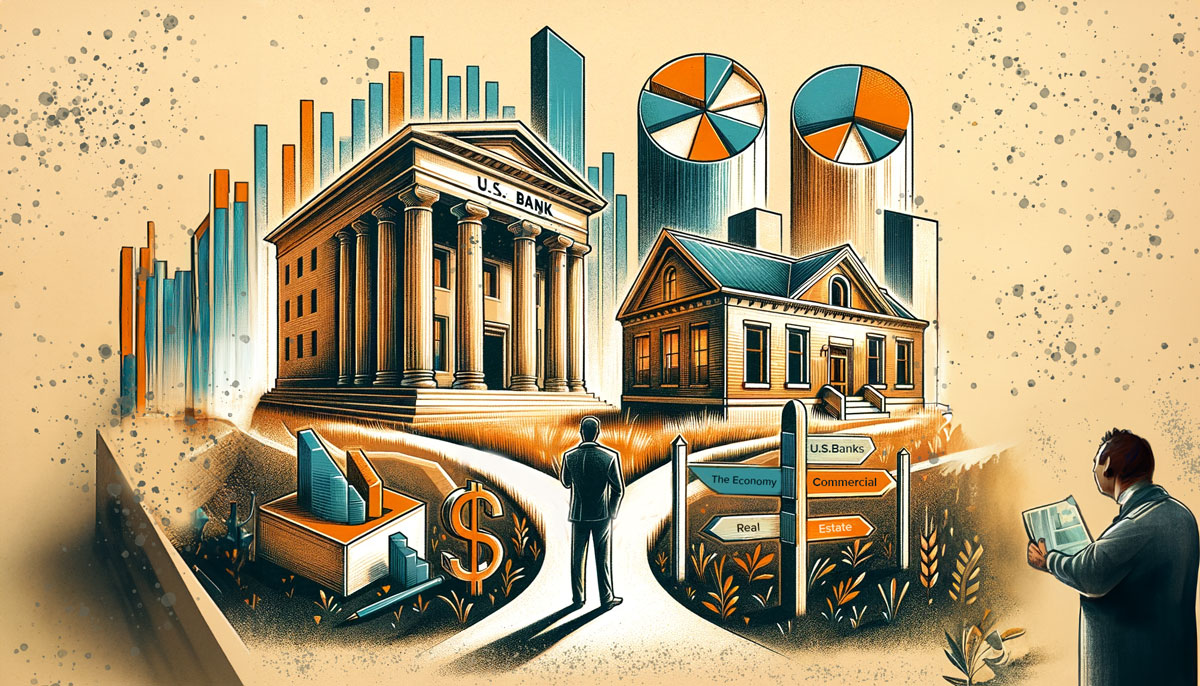Author’s Note: Welcome to this in-depth exploration of the challenges and benefits of remote work and its potential impact on the real estate market, the broader economy, and your life. View this as a sort of “choose your own adventure” type of situation. I have summarized my “white paper” below for those who want a quick overview, and I have dug deeper into the weeds for those who appreciate the finer details!
“The most difficult subjects can be explained to the most slow-witted man if he has not formed any idea of them already; but the simplest thing cannot be made clear to the most intelligent man if he is firmly persuaded that he knows already, without a shadow of doubt, what is laid before him.” – Leo Tolstoy, 1897
The Summary:
I initially put this white paper together for internal use back in February 2023, but I’m sharing it publicly now because I believe it’s critical to bring everyone’s voice into the discussion.
This article talks about how working from home is both good and bad. On the plus side, it saves money and people like it more, but it also can hurt the economy, especially the office space market. If we’re not careful, this problem could cause a big financial crisis like the one in 2008. To stop this, I suggest we could either make companies pay extra taxes if they have too many remote workers (I’m not actually too big on taxes, but keeping an open mind) or give them tax breaks if they have more people working in the office. It’s important to think about what everyone involved wants so we can make a plan that works for all. The article is asking for people’s thoughts on how to balance the convenience of working from home with the need to keep the economy healthy.
I am addressing the issue of remote work and its impact on the real estate market and economy because you’re concerned about deeper problems that could arise if no action is taken. Here are some potential deeper issues we are trying to avoid:
- Economic Downturn: You worry that high office vacancy rates could lead to financial losses for real estate owners and investors, potentially sparking a chain reaction of financial instability that could ripple through the entire economy.
- Job Losses: If the commercial real estate market crashes, it might lead to job losses not only in real estate but across multiple sectors due to financial strain on the whole economy.
- Community Decline: Empty offices can lead to declining city centers, impacting local businesses, reducing community engagement, and contributing to urban decay.
- Social Isolation: You know that remote work can make some people feel lonely and disconnected, affecting mental health and community cohesion.
- Loss of Government Revenue: Low occupancy in office buildings means less income for cities from property taxes, which can lead to funding cuts for essential public services.
- Housing Market Impact: A financial crisis in commercial real estate could spill over into the residential market, potentially causing home values to drop and foreclosures to rise.
By discussing this issue, we aim to prompt action that will prevent these deeper issues from taking root, thereby protecting the broader economy, safeguarding community vitality, and maintaining quality of life for individuals.
The White Paper – Our Problems Are Real
Summary – The rise of remote work has brought many benefits to employees and businesses, but when coupled with an inflationary environment, it has created unforeseen challenges in the real estate sector, like high office vacancy rates and, ultimately, massive loan defaults. As citizens, we need to have open discussions about the challenges arising from remote work and inflation, and work together to find balanced solutions that keep the advantages of remote work while tackling its negative effects on our communities and economy. In this article, we will explore the pros and cons of remote work, its impact on our lives, and some possible options for addressing these challenges. By having open conversations and considering all perspectives, we can develop creative solutions that benefit everyone in our society.
Here are a few current examples of defaults or distress being reported in the CMBS market due to high vacancy rates, floating interest rates, or a combination of both (to name just a few):
In today’s rapidly changing world, the rise of remote work has brought about significant benefits for employees and businesses alike. However, coupled with a higher interest rate environment, it has also led to some unintended consequences, particularly in the real estate sector, where high office vacancy rates and defaults on loans pose risks to the broader economy.
This will not be an easy conversation, but we must engage in an open and honest conversation about these challenges if we are to save ourselves. We must, not as a matter of left or right politics, or employee vs. employer, but as a matter of shared concern for the well-being of our country and the global economy. By fostering a thoughtful dialogue, we can work together to find balanced solutions that preserve remote work’s benefits while addressing its potential negative impacts on our communities and our economy.
As a concerned citizen who closely follows the intersection of real estate and economics, I have observed the economic challenges arising from high office vacancy rates in major cities. The rise of remote work, fueled by technological advancements and the COVID-19 pandemic, has transformed how we work.
I have developed two options that I think are important enough to share. First, before we develop solutions together, let’s lay out the benefits of remote work and the problems it presents, including unintended secondary effects, and then provide an overview of some options to get the conversation started and potentially provide economic relief.
I believe that by engaging in open dialogue and carefully considering all angles, we can work together to find innovative solutions that protect our economy and improve the quality of life for all of us.
The Good
Remote Work’s Positive Impact on Companies and Employees
Summary – Remote work offers benefits like cost savings, access to talent, and employee satisfaction, but it can also negatively impact the real estate market and local businesses. By promoting a hybrid work model, companies can balance these effects while staying competitive and supporting their communities.
Let’s first address the real benefits of remote work, which HappyNest enjoys daily:
- Cost savings for companies: Remote work allows companies to save on overhead costs, such as office space, utilities, and office supplies. These savings can be reinvested in business development or employee benefits, improving overall company performance.
- Access to a broader talent pool: Remote work enables companies to hire the best candidates regardless of geographic location, helping them build more diverse and skilled workforces.
- Increased employee satisfaction and retention: Remote work can increase job satisfaction, as employees enjoy greater flexibility and work-life balance, resulting in lower turnover rates and reduced hiring costs for companies.
- Enhanced productivity: Many employees report increased productivity when working remotely, as they can create personalized work environments and experience fewer distractions than in traditional office settings.
- Reduced commuting stress: Remote work eliminates the need for daily commuting, reducing stress for employees and allowing them to focus more on their work and personal well-being.
- Environmental Benefits: Remote work has logically contributed to reduced emissions by decreasing the number of employees commuting to work daily. However, it is essential to recognize that there are alternative ways to address environmental concerns without relying solely on remote work, such as incentivizing use of public transportation, supporting a transition to electric vehicles, requiring office buildings to go green, and mandating sustainable urban development.
While these benefits are undeniable, it is crucial to balance the advantages of remote work with the potential negative consequences it can have on the real estate market, local businesses, and the broader economy. These uncertain times call for decisive action, and I am compelled to help find that sweet spot between remote and in-office work.
Embracing a hybrid work model that blends the flexibility and cost-saving benefits of remote work with the irreplaceable culture, creativity, and collaboration that in-person office experiences provide, companies can strike the perfect balance. By doing so, they not only maintain their competitive edge but also play an instrumental role in revitalizing local real estate markets, bolstering the economy, and fostering thriving, interconnected communities. This innovative solution presents a win-win scenario for businesses and society alike, ensuring a prosperous future for all.
The Bad
A Faltering Commercial Real Estate Market Casts a Large Shadow
Summary – In this section, we examine the potential negative consequences that could arise if no policy changes are implemented to address the escalating trend of remote work. These repercussions include increased pressure on the commercial real estate market, financial instability due to widespread loan defaults, the decline of local businesses, weakened local economies, urban decay, and social issues such as heightened isolation among remote workers. The most pressing concern is financial instability, which has the potential to trigger a crisis more severe than the Great Recession of 2008, given its extensive impact on society. Loan defaults are already occurring nationwide, with major cities being particularly affected. J.P. Morgan predicts that nearly $39 billion in CMBS office loans will default. It is crucial to remember that the 2008 financial crisis disrupted not only real estate and finance sectors but also nearly every aspect of the economy. The results, rather than the assigning of blame, are what truly matter, as they have deep, widespread implications for us all on a personal level.
Now, let’s examine just some of the potential negative impacts of continuing down the current path with no changes to policy:
- Strain on commercial real estate: With no intervention, high office vacancy rates could persist, leading to a prolonged downturn in the market. Landlords may lower rents or provide concessions to attract tenants, further squeezing their profit margins and increasing the risk of loan defaults.
- Financial instability: The domino effect of loan defaults in the real estate sector could profoundly impact the broader financial system. As mentioned previously, defaults in commercial real estate loans can lead to defaults in CMBS loans, CLOs, and other derivative products. This chain reaction increases the likelihood of a financial crisis like or worse than the 2008-2010 Great Recession, particularly given the high inflation rates we’re currently experiencing.
- Trickle-down effects on various industries: A collapse in the CMBS market and banking system could have far-reaching consequences for numerous industries. As access to credit becomes more difficult and expensive, businesses may face challenges in funding their operations, leading to reduced investments, layoffs, and potential bankruptcies. This ripple effect could exacerbate the economic downturn, further impacting sectors like retail, hospitality, travel, automotive, and oil and gas, which are already facing challenges in the current economic environment.
- Loss of local businesses: As office buildings remain vacant, local businesses in central business districts that rely on foot traffic from office workers will continue to suffer. The results are closures, job losses, and a further decline in the vibrancy of city centers.
- Weakening local economies: The decline in local businesses and the real estate market will harm local economies, reducing tax revenues and limiting the resources available for public services and infrastructure.
- Urban decay: Prolonged high office vacancy rates can contribute to urban decay, as vacant buildings can become eyesores, attract crime, and ultimately reduce property values in the surrounding area.
- Social implications: The shift to remote work has increased isolation for some workers, which can contribute to mental health issues and weaken community bonds. By bringing employees back to the office, we can foster social interaction and support networks essential to overall well-being.
I want to dive deeper into financial instability because I believe that to be the greatest risk to social stability. 👇
The Ugly
Defaults and the Risks of a Great Recession 2.0
Summary – The rise of remote work has led to high office vacancy rates, which can create a chain reaction with severe consequences for the economy and American households. This chain reaction includes landlords struggling to meet debt service, loan defaults, banks needing bailouts, and the government being unable to afford another bailout. With potential consequences like unemployment, home foreclosures, increased cost of living, and more, it’s vital to find policy solutions that encourage a balance between remote and in-office work. This approach can help support local real estate markets and communities while still preserving the benefits of remote work.
Here’s a simplified version of the potential chain reaction (like a snowball rolling downhill) that could occur:
- A combination of high office vacancy rates due to remote work and rising interest rates, resulting from the Fed’s efforts to control inflation, could cause landlords to struggle with meeting their debt service.
- The inability to make loan payments may lead to defaults on loans and related products, such as Commercial Mortgage-Backed Securities (CMBS) and Collateralized Loan Obligations (CLOs).
- Banks, unable to meet their obligations, might be forced to either receive a bailout or hand their assets over to the government.
- The government, unable to afford another bailout without severely damaging the dollar, would be left to deal with the consequences (which is undesirable).
These interconnected financial instruments create a situation where a crisis in one sector can quickly spread to others, as seen during the 2008-2010 Great Recession. In the current environment of high inflation and the Federal Reserve’s balance sheet still holding toxic assets from the previous crisis, the government’s ability to intervene and rescue failing banks is limited. This series of events increases the risk of a potential financial meltdown, which could have dire consequences for the average American household.
While remote work has undoubtedly improved the lives of many workers, it is crucial to strike a balance that considers the broader implications for society. In my opinion, the negative impacts of a financial crisis on individual citizens far exceed the benefits provided by remote work.
Some of the consequences of such a crisis could include:
- Unemployment: A financial crisis can lead to widespread job losses, as businesses struggle to survive and are forced to cut costs by laying off workers.
- Home foreclosures: With high unemployment rates and reduced household incomes, many homeowners may be unable to meet their mortgage payments, leading to a rise in home foreclosures and further depressing the housing market.
- Increased cost of living: Inflation, which is already impacting the cost of living in almost every category, including food costs, could be further exacerbated by a financial crisis.
- Mounting credit card debt: With the average American household’s credit card balance reaching a record high of $986 billion in the fourth quarter of 2022, a financial crisis could lead to even more significant debt burdens and defaults, as families struggle to make ends meet.
- Reduced access to credit: During a financial crisis, banks typically tighten lending standards, making it more challenging for individuals to access loans for essential purchases, such as cars or homes.
- Strained social safety nets: A financial crisis puts immense pressure on social safety nets, such as unemployment benefits and social security, which may already be stretched thin.
- Erosion of retirement savings: Financial crises can lead to significant losses in the stock market and other investment vehicles, putting retirement savings at risk for millions of Americans.
Given these potential consequences, it is crucial to explore policy solutions, such as the proposed tax penalty or incentives, that can help mitigate the risk of default in the real estate sector and prevent a domino effect on the broader economy.
By encouraging a balanced approach to remote and in-office work, we can support the revitalization of local real estate markets and communities, while still preserving some of the advantages of remote work for employees and businesses alike.
Let’s Explore Options
The Carrot vs. Stick Approach
Authors Note: I generally prefer incentives over taxes; however, it’s important to consider every possibility, isn’t it? As someone who aims to solve problems rather than just highlight them, I’ve laid out a few potential solutions to get us started.
Option 1 – Tax (Least Favored Option):
Implement a tax penalty for companies that exceed a 20% remote workforce threshold. This penalty should be calculated based on the average annual cost of office rent for a Fortune 500 company and the cost savings from reduced office footprints due to remote/hybrid workforces.
The goal is to make hiring local/in-office employees more cost-effective than relying on remote workers.
This policy could help stabilize the real estate market by increasing demand for office spaces, reducing the risk of a financial crisis. It may also boost local economies by increasing foot traffic and patronage of businesses in central business districts.
Option 2 – Incentive (My Personal Favorite):
To sum it up, these tax incentives aim to create a balance between remote and in-office work, benefiting both employees and local businesses. Offering tax breaks for employees working in the office, supporting local businesses, and encouraging eco-friendly office spaces can help improve the real estate market and create vibrant communities. These incentives prioritize individual workers and communities, making it a more appealing approach for everyone, while still encouraging companies to maintain a physical presence without punishing those who rely on remote workforces.
The tax incentive proposal aims to encourage businesses to maintain a balance between remote and in-office work by offering tax credits for companies with a high percentage of in-office employees, tax deductions for office space expenses, tax benefits for employees working primarily in the office, incentives for green office spaces, and financial support for local businesses. By implementing these incentives, companies are motivated to prioritize local hiring and maintain a physical presence in their communities without penalizing those that rely on remote workforces.
These tax incentives offer several benefits, such as revitalizing the real estate market by stimulating demand for commercial spaces, supporting local businesses and communities by increasing foot traffic, and fostering a vibrant office culture. Moreover, the incentives promote environmentally sustainable practices by encouraging companies to invest in green office spaces. This approach not only preserves the benefits of remote work but also addresses its potential negative impacts on the economy and local communities.
Implementation of Tax Option 1:
By implementing a tax (a dirty word, I know) on large companies with more than 15,000 employees that exceed a 20% remote workforce threshold, we can attempt to encourage businesses to bring employees back to the office, at least in a hybrid scenario. The goal is stabilizing the real estate market and reducing the risk of a financial crisis that will hurt us all.
One possible calculation for a tax penalty is as follows:
- Tax Revenue = Employees Count Above 20% Threshold * Average Annual Cost PSF * National Average Office space per Employee
Let’s consider the numbers. The average annual cost of office rent for a Fortune 500 company is around $30 per square foot (“PSF”), while the cost savings from reducing office footprints due to remote work is estimated at 25%. For example, if a company has 20,000 employees and 4,500 (22.5%) work remotely, it will exceed the 20% remote workforce threshold by 500 employees.
The formula for this example would result in a $750,000 tax penalty:
- 500 employees * $30 PSF * 200 SF (average office space per employee) * 25% cost savings = $750,000
This tax penalty is designed to make hiring local/in-office employees more cost-effective than relying solely on remote workers, ultimately incentivizing businesses to lease more office space and revive the struggling real estate market.
Implementation of Tax Incentive Option 2:
Here are a few ideas on how to implement such incentives:
- Tax credits for businesses with a high percentage of in-office employees: Offer tax credits to companies that maintain a specific rate of their workforce in the office (e.g., at least 80%). The tax credit could be calculated based on the company’s total office rent expenses and the number of in-office employees, incentivizing businesses to prioritize local hiring and maintain a physical presence in their communities.
- Tax deductions for office space expenses: Encourage companies to invest in office spaces by allowing them to deduct a higher percentage of their office rent and related costs from their taxable income. This would make maintaining an office space more cost-effective and could stimulate demand for commercial real estate.
- Tax benefits for employees who work in-office: Offer tax deductions or credits to individuals who work primarily in the office. This could include deductions for commuting expenses, work attire, or other costs associated with in-office work. Such incentives would motivate employees to return to the office and help create a vibrant office culture.
- Incentives for green office spaces: Encourage companies to invest in environmentally friendly office spaces by offering tax incentives for energy-efficient buildings, green infrastructure, and sustainable building materials. This approach would promote the return of in-office work and contribute to environmental sustainability.
- Grants or subsidies for local businesses: Offer financial support to small businesses, particularly those in central business districts, to encourage them to hire more local workers and maintain a strong community presence. This could take the form of grants, low-interest loans, or other types of financial assistance.
By implementing these tax incentives, you can encourage companies to balance remote and in-office work, helping revitalize the real estate market and support local businesses without penalizing companies that rely on remote workforces.
Weighing Perspectives of Stakeholders on Tax Penalties and Incentives
Summary – When evaluating tax penalty and tax incentive proposals, it’s important to consider the perspectives of different stakeholders, such as large companies, employees, small businesses, the real estate market, and local businesses. Each group may have different opinions about remote work and how these proposals could impact them. Balancing the needs of all stakeholders is essential to create effective, fair, and enforceable policies. As concerned citizens, it’s important to understand everyone’s point of view and aim for solutions that work for everyone, so that the policy changes can truly benefit the community and economy.
We must carefully consider various stakeholders’ perspectives and concerns when evaluating tax penalty and tax incentive proposals. The issue is undoubtedly complex, and opinions will most certainly vary:
- Large companies:These businesses may argue that remote work increases productivity, saves costs, and allows them to tap into a global talent pool; while a tax penalty could hinder their competitiveness and flexibility, tax incentives might encourage them to strike a balance between remote and in-office work.
- Employees: Remote workers may feel unfairly targeted by a tax penalty, as it could pressure them to return to the office, potentially sacrificing work-life balance and increasing expenses related to commuting and work attire. On the other hand, tax incentives could be more appealing as they foster a hybrid work model without penalizing remote employees.
- Small businesses:They could be concerned that a tax penalty would eventually be extended to them, restricting their ability to adapt to market demands and employee preferences. However, tax incentives could promote a balanced approach to remote and in-office work, benefiting small businesses without imposing restrictions.
- Real estate market:Landlords and investors would likely support a tax penalty, as it could help stabilize the market, increase demand for office spaces, and reduce the risk of a financial crisis. Similarly, tax incentives might achieve these goals by encouraging businesses to maintain a physical presence in their communities.
- Local businesses:The return of office workers to central business districts would be a boon for retailers, restaurants, and other establishments that rely on foot traffic from office building workers. Both tax penalty and tax incentive proposals could achieve this by stimulating demand for commercial spaces and supporting local businesses.
As concerned citizens who may not directly influence public policy, it is crucial to carefully consider all perspectives and objections to arrive at an effective, fair, and enforceable solution. After all, laws without enforcement are like umbrellas with holes—well-intentioned but failing to provide the protection they promise.
A Call to Action
Striking a Balance in the Remote Work Era
Summary – The main idea is to find a balance between the benefits of remote work and its negative impact on the real estate market and the economy. By exploring tax penalties or incentives for companies with a high percentage of remote workers, we hope to prevent serious consequences and protect the economy. This is just a starting point for conversation, and it’s important for everyone to share their thoughts and ideas to help find the best way forward.
This proposal is not a one-size-fits-all solution but a starting point for an essential conversation about how we can improve our economy in the face of unprecedented challenges.
Given the potential consequences I’ve laid out, it is crucial to explore policy solutions, such as the proposed tax penalties or incentives, that can help mitigate the risk of default in the real estate sector and prevent a domino effect on the broader economy.
I believe that the proposed tax penalties or incentives for large companies with a high percentage of remote workers aim to balance preserving the benefits of remote work and mitigating its negative impact on the economy.
It is essential to recognize that while remote work has its advantages, continuing down the current path without change could have serious negative consequences for the real estate market, the economy, and society.
Please share your thoughts and comments, because I believe that we can save ourselves by saving the economy.










